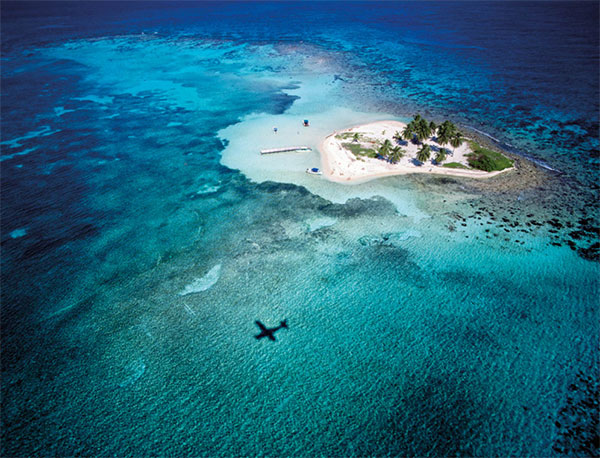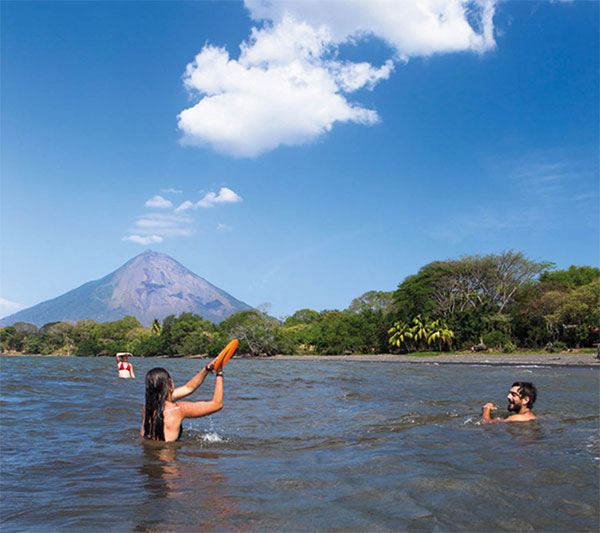INSIGHT: ECOTOURISM IN BELIZE
For centuries, Belize’s small population and lack of industry caused it to be left behind in the development race. When it comes to ecotourism, however, this has worked to its great advantage.
Belize has long been the region’s ecotourism titan, with some of the world’s most accessible tropical wilderness and the longest Barrier Reef in the western hemisphere, which lures travelers from across the globe. In the mid-1980s, the government recognized that small-scale, low-impact tourism was the way to provide stable economic growth while still safeguarding the environment. Rather than mimic the mass-tourism path of Cancún 400km (250 miles) to the north, Belize decided to follow one that would allow as many Belizeans as possible to participate in the tourism industry as stakeholders.
Belize’s rainforests support by far the greatest diversity of wildlife. They are the result of optimal conditions for life on land in this area – abundant sunlight, warmth, and moisture.
The jaguar is probably the most celebrated creature of the rainforest – Belize created the world’s first jaguar sanctuary at Cockscomb Basin (for more information, click here), specifically to protect it. Roaming beneath the rainforest canopy and along the banks of mountain streams, four other wildcats share the territory: jaguarundi, margay, ocelot, and puma. All are endangered throughout their ranges, but Belize supports healthy populations. Other celebrated inhabitants of the forest include Baird’s tapir, known locally as the ‘mountain cow,’ and the black howler monkey, whose aggressive and alarming roar is frequently mistaken for that of a jaguar. ‘Baboons,’ as they are known in Belize, live in troops of between four and eight, and carve out a territory of favorite food trees. Howlers often begin and end their days with a roar – a noise that can carry for several kilometers. Belize supports one of the last strongholds of baboons in the region: at the Community Baboon Sanctuary (for more information, click here). which helps to protect their natural habitat.

Unesco has awarded World Heritage status to the Belize Barrier Reef, and miles of these delicate ecosystems have been designated as marine reserves.
Getty Images
Belize Audubon Society
The Belize Audubon Society (BAS; www.belizeaudubon.org), formed in 1969, is Belize’s foremost environmental organization. It aims to maintain a balance between the needs of the nation’s people and the environment through sustainable management of natural resources and public education programs. The society manages more than 77,000 hectares (192,000 acres) of protected land in nine separate areas, including Crooked Tree Wildlife Sanctuary, Guanacaste National Park, St Herman’s Blue Hole National Park, Cockscomb Basin Wildlife Sanctuary, Blue Hole Natural Monument, and Victoria Peak National Monument. Looking to do your part for the environment? The BAS offers volunteer opportunities throughout the country – sign up via the website.
THE CENTRAL REGION
Pristine cloud forests burst with wildlife, mist-covered coffee plantations, and lively tropical isles, yet the once-turbulent central region countries remain virtually unexplored.
Central America’s mid-isthmus nations have landscapes as diverse as Costa Rica, a flora and fauna as rich as Panama, and beaches as dreamy as Cancún, yet the world has yet to fully take notice. Tied together by years of civil war and corruption, much of it influenced by exterior forces, El Salvador, Honduras, and Nicaragua are less developed than their neighbors, but that shouldn’t deter your visit by any means. These countries have plenty to offer the intrepid visitor.

Playing frisbee in the shadow of Concepción volcano on Punta Jesus Maria beach, Nicaragua.
Getty Images
On the Pacific coast, white sand beaches and some of the world’s most reliable surfing can be found. There’s no sense of mass tourism here, although luxe resorts have established themselves north of San Juan del Sur. In the Caribbean, the English-speaking Bay Islands and Corn Islands have a completely different vibe than the mainland, with reggae blasting in the streets and a culture that revolves around diving, fishing, and tourism. Intersected with banana plantations and mangroves, Honduras’ north coast is starting to come into its own, with one-of-a-kind ecolodges and a mega-resort project that have changed the way people travel to the country.
There are ruins here too, like the Mayan city of Copán, with its carved stelae and hieroglyphic staircase, as well as El Salvador’s Joya de Cerén, a farming village covered in volcanic ash after an eruption, giving it the moniker of the ‘Central American Pompeii.’ Lake Nicaragua, with its double volcano island of Ometepe, and lesser known Yojoa, are two biodiversity hotspots in a region full of them.
Then there’s La Mosquitia, the vast, undeveloped region of tropical rainforest and pine savannah that is Central America’s largest area of wilderness. Natural areas like the Río Plátano Biosphere Reserve have some of the region’s highest concentrations of flora and fauna, making it one of the more likely settings for spotting bucket list species like jaguars and harpy eagles. Little known ethnic groups like Miskito, Pech, and Sumo live along isolated rivers and lagoons, while the remnants of lost cities are slowly being carved out of the jungle.